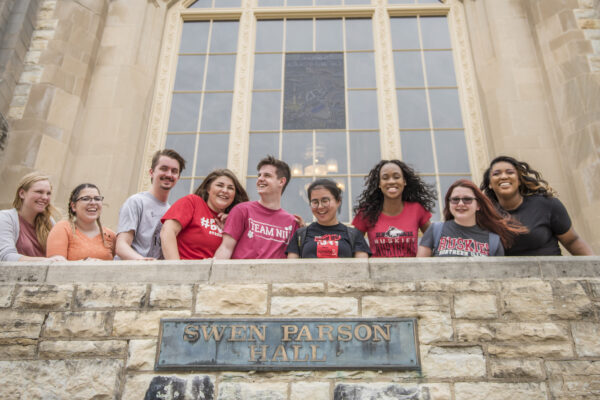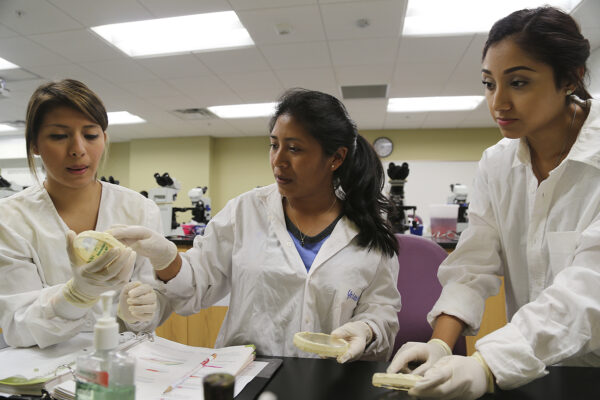By Peter McDonough
This post is the latest in a series on college student mental health and well-being.
Last year, in a closely watched student suicide case filed against the Massachusetts Institute of Technology (MIT), the highest court in Massachusetts ruled in favor of MIT, two of its professors, and an assistant dean, but said that a college may have a legal duty to take “reasonable measures” to “prevent a student’s suicide.” This duty, which also extends to faculty and staff members personally, exists in two contexts where there is “actual knowledge”: (1) of a prior suicide attempt that occurred while the student was enrolled at the university or just before matriculation, or (2) of a student’s “stated plans or intentions” to commit suicide, i.e., more than suicidal ideation.
The court emphasized that there is no general legal duty to prevent someone from committing suicide, and it recognized that “the modern university-student relationship is respectful of student autonomy and privacy.” Indeed, it underscored that colleges have no business monitoring all aspects of their students’ lives, including “personal mental health decisions.” However, for the Massachusetts Supreme Judicial Court “foreseeability” is the lynchpin of a limited legal duty to suicidal students—particularly on residential campuses. The inquiry thus becomes whether the particular facts gave rise to such a limited duty and, if so, whether there was a failure to take reasonable measures “to intervene to save a young person’’s life” despite it being “within the university’s knowledge and power to do so.” The court offered several examples of reasonable measures, including initiating a suicide prevention protocol, notifying a student’s emergency contact, or mobilizing emergency personnel if deemed necessary.
The ruling in Massachusetts comes at a time when suicide rates of young people are higher than they have been in nearly 20 years. The New York Times and other news outlets have chronicled steps colleges are taking to manage this sharp rise in mental health issues, which comes amidst the “grinding, everyday stresses, from social media pressures to relationship problems to increased academic expectations.” The American College Health Association recently reported that over 60 percent of college students said they had experienced “overwhelming anxiety” in the prior year, and in the same timeframe, a little over one in 10 college students seriously considered suicide. This is an increase of over six percentage points in less than a decade.
Against this troubling backdrop, student life deans, resident directors, mental health counselors, and others try to balance and respond to the competing tensions and obligations of managing at-risk students on a 24/7 basis. One vexing challenge facing these professionals is whether, and how, an institution may require an enrolled student to take an involuntary leave of absence while the student addresses mental health concerns. A related question is whether, and to what extent, conditions may be imposed upon the student’s return to campus or the residence halls. The short answer is yes, and yes. But involuntary leave is a last alternative; it is not easy, and it needs to be factually justified on a case-by-case basis.
In a January 2018 oral briefing to higher education lawyers sponsored by the National Association of College and University Attorneys (NACUA), a U.S. Department of Education official described principles gleaned from past letters of findings and resolution agreements entered into by the Department’s Office for Civil Rights (OCR) with individual colleges and universities. These principles offer a lens into OCR’s approach in enforcing of the Americans With Disabilities Act (ADA) and Section 504 of the Rehabilitation Act in cases involving self-harming students. In turn, they are useful to colleges and universities in their efforts to address students who pose a risk of self-harm. In short, the official emphasized the importance of individualized assessments and fair processes, while noting that behavior contracts, review of a student’s medical information, and (as a last resort) involuntary separations can be lawful practices.
Recent discussions with OCR confirm that these principles remain sensible, appropriate, and lawful guideposts for campus staff working with students who pose a risk of self-harm. It appears that OCR will continue to embrace them in its investigations into such matters.
The principles:
1. Colleges and universities always have the option of offering mental health services to students, whether or not the students are identified as having a mental health issue and whether or not the students are in crisis.
2. Institutions should consider reasonable accommodations that would enable the potentially self-harming student to remain enrolled and/or on campus.
- The college environment should be safe, inclusive, and nondiscriminatory. Where possible, and consistent with the Americans with Disabilities Act, institutions should explore whether a student at risk of self-harm may remain enrolled at the institution, with or without reasonable accommodations.
- Institutional policies that refer instances of self-harm to the student discipline system, and offer no other channels for accommodation, may be found by OCR to have a discriminatory effect.
3. Where separation of the self-harming student from the institution is considered, institutions should prioritize and encourage a voluntary withdrawal by the student whenever feasible.
4. When considering institutional policies, OCR looks for policies that are non-discriminatory on their face and do not treat similarly situated disabled and non-disabled students differently.
- A policy that singles out particular mental diagnoses would be problematic.
- A policy that treats mental health differently from other medical conditions would be problematic.
5. Involuntary separations from enrolled status may be used as a last resort.
- Students must be afforded a fair process to contest an involuntary separation.
- Involuntary leave policies should be based on the student’s particular circumstances. Policies should not take a one-size-fits-all approach or have a minimum mandatory duration for certain types of leaves. However, this principle does not prevent the application of general academic policies to all students who take leaves of absence.
6. When responding to a student self-harm situation, colleges and universities should conduct an individualized assessment of the particular student’s risk of self-harm.
- Actions should not be tied to myths, fears, or stereotypes about mental illness.
- Actions should develop from a premise of doing what’s right and appropriate for a particular student.
- A one-size-fits-all approach is a potential red flag; instead, institutions should tailor their assessments and actions to individual circumstances.
7. OCR expects institutions to respond to student’s risk of self-harm in a reasonable and fair manner.
- A fair process that responds to a student at risk of self-harm typically should include (1) notice; (2) information about the process; (3) an opportunity to provide information that the student wants to have considered; and (4) the institution’s careful consideration of the information provided by the student, with due weight given to the student’s health care providers.
- A fair process calls upon institutions to consider the context in which the information about the risk of self-harm is exchanged, including the seriousness of the crisis the student may be facing.
- Institutions may still take swift action or call on law enforcement in urgent circumstances to detain the student, but the use of law enforcement should not be the only option considered. As with other aspects of assessing the student’s risk of self-harm, institutional actions in non-emergency situations should be undertaken only when based on individualized assessments.
8. As part of an individualized assessment, institutions may consider medical and clinical information.
- Input from qualified health providers is relevant to individualized assessments.
- A student’s treatment provider should be given an opportunity to provide information. The provider’s input should be given serious consideration.
- Institutional requests for the student’s medical information should not be overly broad. The requests should be tailored to whatever information is necessary for qualified personnel to assess the risk of self-harm.
- Medical and clinical information provided to the institution should be reviewed and interpreted by qualified personnel.
- Any actions taken in reliance on medical/clinical information provided to the institution should be reasonably linked to this information.
- As part of its individualized assessment, an institution may consider the impact of the student’s behavior on others in the community.
9. Institutions may impose reasonable, individualized conditions for students returning after a leave of absence.
- Conditions must be individually tailored to a student’s unique circumstances.
- In setting conditions for return, while institutions may consider a uniform set of criteria in all cases (which should be set forth in applicable policy), each individual case must be considered on its merits and facts. One-size-fits-all conditions for return from leaves of absence would not be consistent with OCR’s expectation that institutions will always undertake a thoughtful and fair individualized assessment of a student’s unique circumstances.
- Institutions can require medical evaluations from a returning student’s treatment providers to prepare for a student’s return. Institutions can require compliance with a medically prescribed treatment plan.
- Institutions may implement individually tailored behavioral contracts with returning students. They may hold students accountable to the terms of the contract.
Because these principles are drawn from various OCR letters of findings and resolution agreements that offer descriptions of the factual contexts in which issues arose, campus staff may benefit from reviewing these source materials themselves. They are, in essence, the “case law” from which OCR has fashioned the equivalent of de facto guidance in this challenging area.
Importantly, taken together, they underscore that it is a false perception that campuses’ hands are tied when dealing with students who are threats to themselves, but not to others. On the contrary, nondiscrimination and accommodation obligations toward these students can be reconciled with sensible attentiveness to their own personal safety and well-being. Indeed, in Massachusetts at least, it’s the law.
If you have any questions or comments about this blog post, please contact us.



